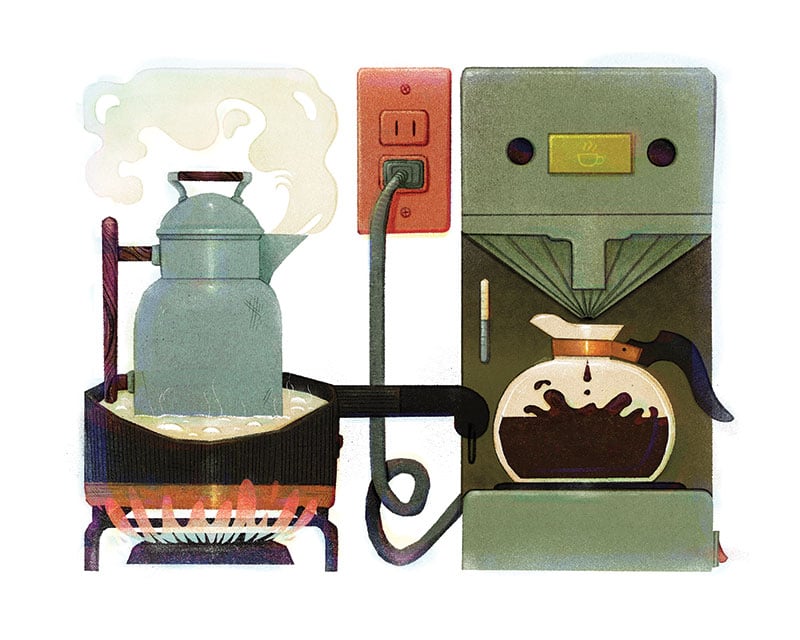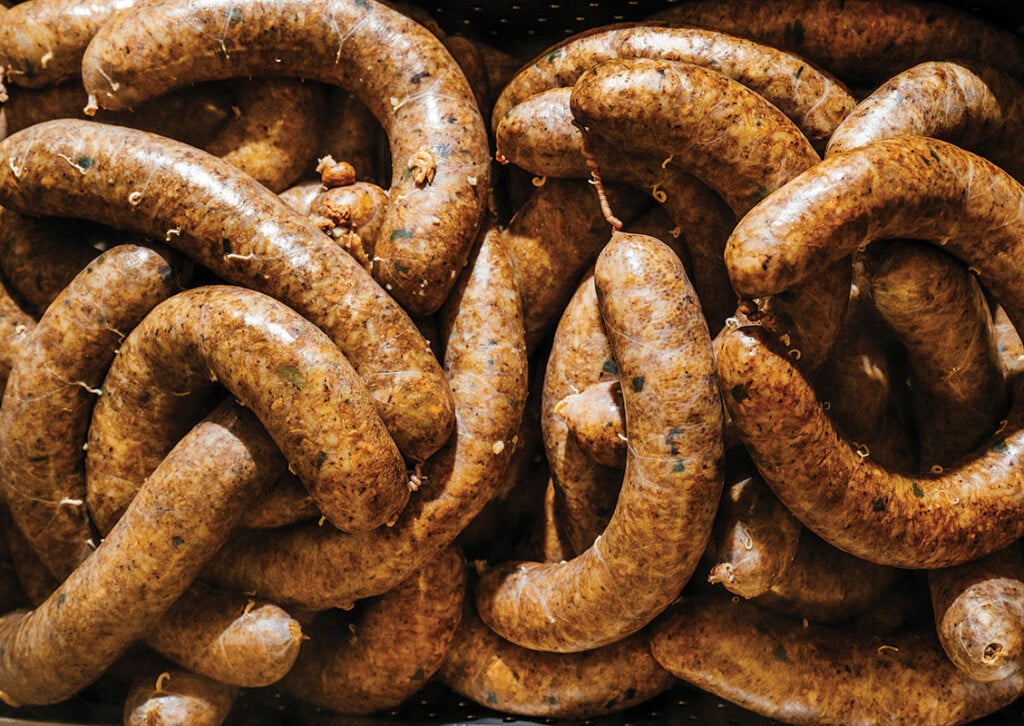Mawmaw’s Kitchen: Straddling Two Eras
La Cuisine à Mémère

Mémère (“Grandma”) ran a kitchen that in many ways straddled two different eras: sometimes, arriving at her house for le dîner de dimanche (“the Sunday lunch”) that followed morning mass, the deep, almost palpable aroma of strong coffee that seized you at the door would lead you to the stove, where the odor found its source in an old, well-loved grègue à café (“coffeepot”) bathing in a saucepan, a dull tower of aluminum surrounded by a moat of hot water, perched atop the eternal flame of the gas burner; other times, however, the morning’s coffee came from an electric drip coffee machine, and the scent emanating from the pot carried with it also the light, now-familiar notes of burnt dregs and scalded plastic that form the potent nez (“nose”) of the coffee typical of many modern offices and cafeterias. Likewise, the rice that accompanied almost every meal that came out of Mémère’s kitchen — always blanc (“white”) and always à grains moyens (“medium-grain”) — normally spent the day on the stovetop as well, cooked and kept hot à la vieille manière (“the old-fashioned way”), in a regular chaudière (“cooking pot”) that seemed always, as if by magic, to refill itself before reaching the bottom, like in the old children’s tale about the ouangateuse (“witch, sorceress”) and the two starving orphans. Sometimes, however, the dîner’s rice was instead waiting for us on the counter, in a fancy electric rice cooker sharing an outlet on the wall with the coffee machine, next to the toaster, microwave, and the growing collection of other modern appliances that gradually accumulated in Mémère’s kitchen as the estampique (“desire, whim, fancy”) for them struck.
Pépère (“Grandpa”) and Mémère’s household was full of such forays into modernity, adoptions of modern technology that often coexisted, whether in direct opposition or simply in parallel, with a real reluctance to completely abandon the entrenched customs and artifacts of their youth and of the countless generations before them. Despite this everyday reliance on modern technology, for example, Mémère, throughout her entire life, insisted on keeping an entire garde-manger (“kitchen cabinet”) stuffed and stacked with old lampes à coloïe (“kerosene lamps”), a rarely-used but always-ready alternative to the electrical lighting that most of us reading this article have taken for granted our entire lives. And unlike most homes today, Mémère’s dépense (“pantry”), a room of considerable size, was always kept bien approvisionné (“well-stocked”), a holdover from a time when a trip to la grosserie (“the grocery store”) was a daylong enterprise undertaken not more than once a week, and, furthermore, from a time when the contents of the dozens of jars, boxes and sacks that lined les tablettes (“the shelves”) of the pantry were in any case mostly raised or produced right on the farm itself. By the time of my own childhood, though, apart from a limited selection of jardinage (“vegetables, produce”), most of what was on the plate every dimanche had been purchased from the grosserie, and the meat for Sunday’s standard fare — du riz et de la sauce (“rice and gravy”) — came not from a crock jar in the pantry, nor directly from the basse-cour (“farmyard”), but instead from the store, usually with a brief stay in the glacière (“refrigerator”) the night before.
Pépère and Mémère’s generation were far from the first — and will hardly be the last — to only partially make the transition between two profoundly different eras, but it remains to be seen if le tournage de la roue (“the passing of time, ‘the turning of the wheel’”) during our current century will produce changes as great as those seen in the last.

